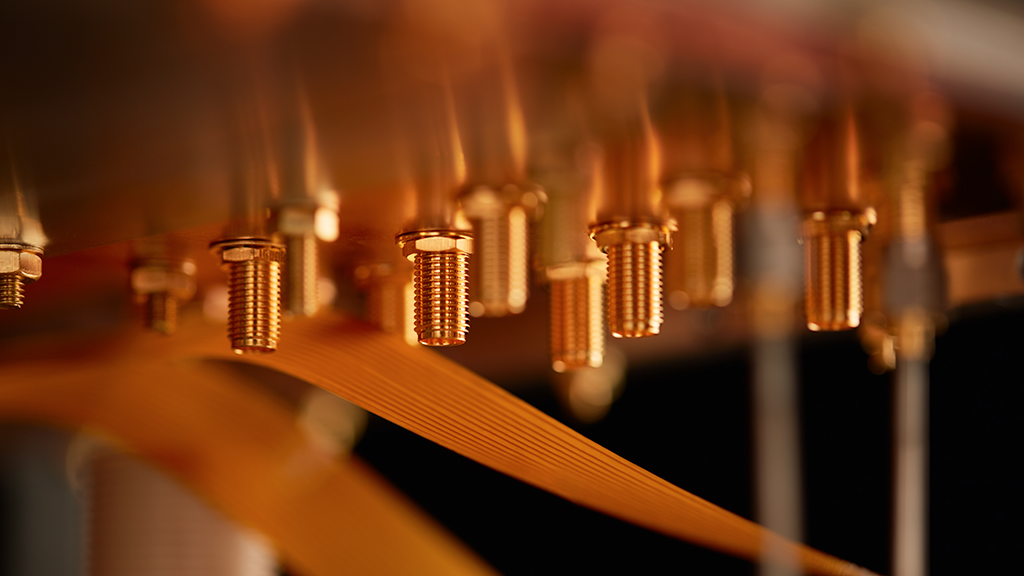
Quantum Computing & Cryogenics: Why Cooling Matters
Introduction
In the cutting-edge realm of the quantum industry, quantum computing and cooling are often closely interlinked. Quantum computing harnesses the fundamental principles of quantum mechanics to process information in a manner vastly different from classical computers. Leveraging quantum bits, or qubits, quantum computers possess vast potential to solve complex problems, including cryptography and optimization challenges, that remain intractable for traditional machines.
Cryogenics is an essential aspect of developing quantum computing. Quantum computers are composed of several devices that need development, characterization and testing at low temperatures. For the computing process itself, many qubit modalities require operation at ultra-low temperatures to preserve their delicate quantum properties and enable accurate quantum computations.
What is a quantum computer cooling system?
In the ever-evolving landscape of the quantum industry, one of the most crucial components of quantum computing systems is the quantum computer cooling system. The challenge lies in maintaining delicate qubits at extremely low temperatures, close to absolute zero, to minimize errors and achieve the desired quantum effects. The quantum cooling industry has witnessed remarkable advancements in recent years, as researchers and engineers explore innovative techniques such as cryogenic refrigeration, magnetic refrigeration, and materials to attain the ultra-cold conditions often required for quantum computations.
Why is cooling necessary for quantum computers?
Cooling is an indispensable factor that profoundly influences the performance and reliability of quantum systems. At the heart of these cutting-edge machines, as previously spoken of, is the concept of qubits, which possess an inherent sensitivity to external influences. Maintaining these qubits at extremely low temperatures, often near absolute zero, is paramount in mitigating the adverse effects of noise and decoherence that can disrupt the delicate quantum states.
As quantum processors tackle increasingly complex tasks, the demand for advanced cooling technologies has spurred a thriving quantum cooling industry.
It is critical to note that cooling is not just about large dilution fridges used for operational quantum computers. Quantum system componentry needs to be tested, measured and characterised as part of research and development.
Cooling techniques used for quantum computers
There are several ways of achieving low temperature cooling for quantum systems. Here we explore two approaches:
Dilution refrigeration using cryogens:
A dilution refrigerator is a cryogenic device that provides continuous cooling to temperatures as low as 2 mK, with no moving parts in the low-temperature region. The cooling power is provided by the heat of mixing of the helium-3 and helium-4 isotopes. Dilution refrigerators have been in use for over 70 years and have undergone significant development during that time. Nonetheless they suffer from several disadvantages outlined in the next section.
Cryogen free magnetic refrigeration:
Adiabatic Demagnetization Refrigerators (ADRs) are a type of magnetic refrigeration that can achieve temperatures lower than 1 K. ADRs use the magnetocaloric effect, which is the reduction in temperature observed when an external magnetic field is applied isothermally to a paramagnetic material. The cooling process involves magnetization, adiabatic demagnetization, heat sink, and regeneration. ADRs use certain types of salts for the molecules, which have particularly large magnetic moments. ADRs are relatively simple, solid-state devices that do not require cryogens for cooling. ADRs have been used for several decades to obtain low temperatures and have been demonstrated to be effective in reaching milli-Kelvin temperatures.
Challenges in cooling quantum systems
A lack of robust and efficient low-temperature cooling solutions is currently hindering the development and industrial application of quantum technology.
1. Dependency on cryogenic liquids
Traditional cryogenic cooling methods, such as liquid helium or liquid nitrogen, require the consumption and handling of cryogenic liquids. This can be costly, logistically challenging, and pose safety risks. In contrast, kiutra’s cryostats are cryogen-free, eliminating the need for cryogenic liquids and simplifying the cooling process.
2. Limited cooling duration
Conventional adiabatic demagnetization refrigerators (ADR) used in traditional cryogenic cooling methods typically provide “one-shot” cooling. Once the cooling process is complete, the system needs to be reset and cooled again. kiutra’s cryostats, on the other hand, can achieve continuous cooling by combining multiple ADR units, allowing for extended periods of ultra-low temperature operation.
3. Long sample cooldown time
Some traditional cryogenic cooling methods may have longer sample cooldown times. kiutra’s cryostats, with their automatic transfer mechanism, can cool samples to 100 millikelvin (mK) in less than 3 hours, providing faster sample cooldown times.
4. Environmental impact
The use of cryogenic liquids in traditional cooling methods can have environmental implications due to the consumption and handling of these substances. kiutra’s cryogen-free technology reduces the environmental impact by eliminating the need for cryogenic liquids and promoting sustainability.
Another significant offering by kiutra here arises from the extensively automated testing and rapid cooldown functionalities of its systems. These attributes enable a decrease in energy and material usage by diminishing the overall count of concurrently operational cryostats.
5. Complexity and size
Traditional cryogenic cooling systems can be complex and require large infrastructure to support the cooling process. kiutra’s cryostats are designed to be compact and offer a cryogen-free solution, making them more versatile and easier to integrate into scientific research and technological applications.
In summary, kiutra’s technology offers cryogen-free cooling, versatility through magnetic cooling, continuous cooling capabilities, fast sample cooldown, and a compact design. These features make their cryostats a sustainable and efficient alternative to traditional cryogenic cooling methods.
Conclusion
Looking ahead, the constant quest for more efficient and novel cooling methods remains a top priority for the quantum industry. Researchers and engineers are committed to exploring advanced cryogenic cooling techniques and other cooling mechanisms to unlock unprecedented applications across various industries. As the quantum cooling industry continues to evolve, these techniques will likely play an increasingly vital role in unlocking the true potential of quantum computing and pushing the boundaries of human knowledge. In conclusion, the challenges in cooling quantum systems underscore the transformative significance of cryogenics, paving the way for a future where quantum advantage becomes a reality.